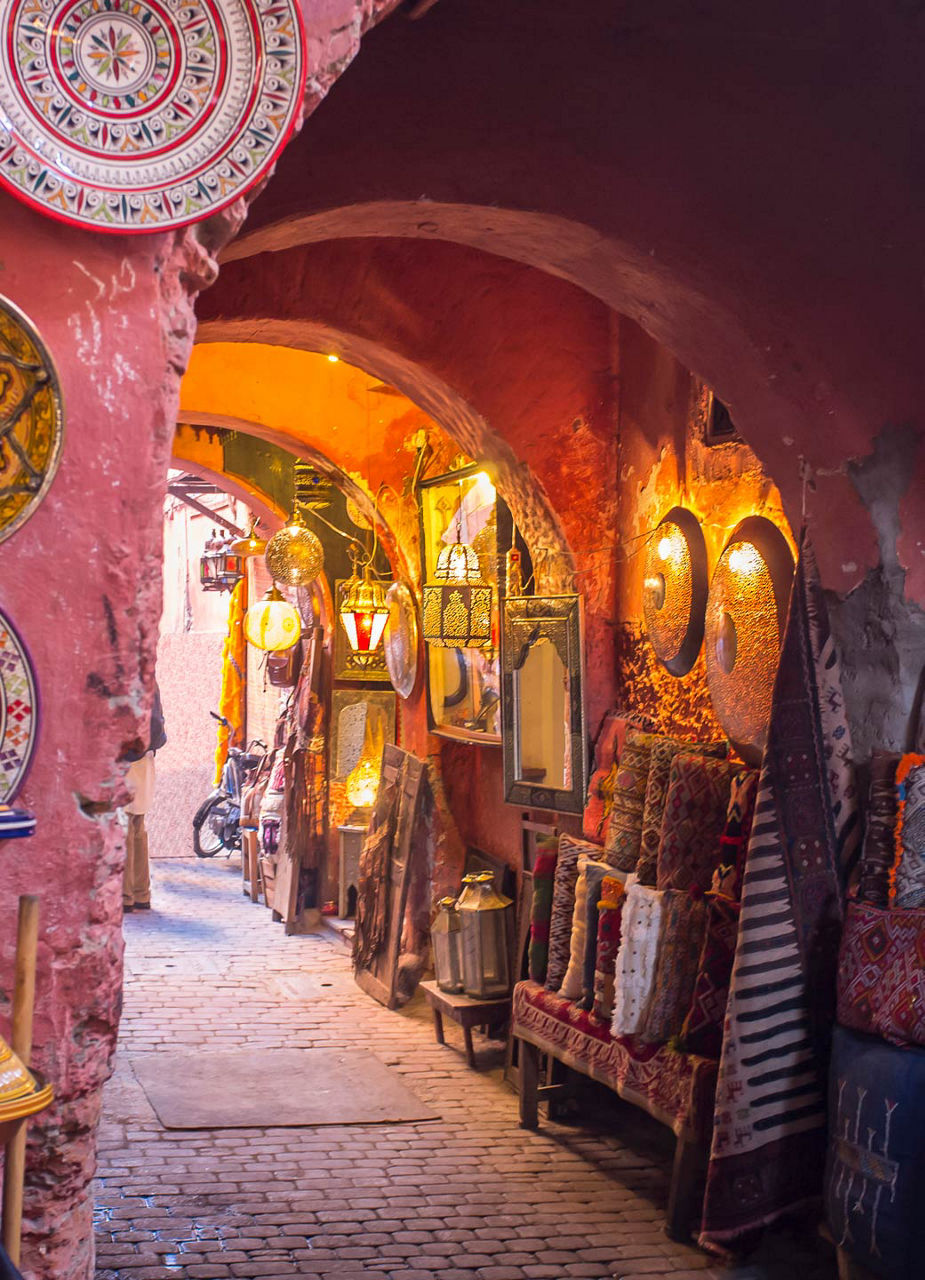
Agadir: the white city by the sea

Even during the approach, the snow-white houses in the crescent-shaped bay catch the eye – it is to these that Agadir owes its nickname 'The White City.' Agadir is young and modern: less oriental flair, more big city, with wide boulevards and large parks. There are several universities here and many young people who contribute to the lively atmosphere of the city. Since a devastating earthquake in 1960, the entire city has been rebuilt. Those who take the time to explore it will find a fascinating mix of tradition and modernity.


Beach life and shopping paradise
Its location close to the Canary Islands makes Agadir a popular spa and water sports destination. From a luxury hotel to a holiday apartment, the city offers accommodation of all kinds, and the climate is pleasantly mild, even in winter. It has a lively nightlife, a promenade and modern glass palaces. The kilometre-long beach and the promenade behind it with its cafés and restaurants attract many visitors as well as locals. One of the most popular places is the adjoining marina with its trendy shops and yachts gently rocking in the water.


The old centre: Kasbah Oufella
You have to look a little for the traces of the more than 400-year-old Agadir, but the ruins of the Kasbah Agadir Oufella catch your eye immediately. The striking building is enthroned on a hill around 240 metres above the city. The fortress was built in the 16th century to protect the city from the Portuguese and was a lively centre with small alleys, a souk, a theatre and a mosque until the earthquake of 1960. Day or night, the visit is worthwhile just for the magnificent view of the bay and the harbour. For several years, a cable car has also been running from the city up to Kasbah and offers a panoramic view of the surrounding area.


Oasis of peace: Jardin de Olhao Garden
There are several inviting parks and gardens in Agadir. The garden Jardin de Olhao, located east of the marina, is particularly beautiful. Its name refers to the Portuguese partner city of Olhao. The park, which is just over two hectares in size, is like a green oasis of calm in the vibrant centre of the city, lushly planted with palm trees and indigenous plants. In the cleverly laid out garden, you can stroll past individual historical buildings in Portuguese colonial style. A small museum commemorates the massive earthquake and displays photos and city maps of old Agadir.


Cultural heritage of the Berbers: Amazigh Museum and Timitar Festival
The Musée du Patrimoine Amazigh offers a good insight into the culture of the Amazigh, who are also known as Berbers. The three-level exhibition includes jewellery, carpets, chests, traditional costumes and traditional pottery. Amazigh music takes centre stage at the annual Timitar Festival. More than 400 national and international artists perform on three stages in the city playing modern and traditional music. The four-day festival is a major attraction and welcomes more than a million visitors every summer.


Souk El Had: at the heart of the city
The centrepiece of the city of Agadir is the huge old market Souk El Had. With around 6,000 shops and an area of 13 hectares, it is one of the largest in Morocco and is just as popular with locals as it is with tourists. The market, with its labyrinth of alleyways, is open every day except Mondays and reveals a world full of colours and aromas. Here you will find enchantingly fragrant spices, artfully piled fruit, colourful fabrics, cosmetics, clothing, honey, furniture, lamps and argan oil. Traders passionately advertise their wares, and visitors should remember to take cash with them, and to bargain persistently, of course.


Between tradition and modernity: the new medina
Five kilometres south of the city centre, the new medina is much quieter. The Italian architect Coco Polizzi had it built in 1992 in the style of the historic old town. It extends over 4.5 hectares and even has an amphitheatre. The architecture is based on that of the region and features Mediterranean and African details. Like travelling back in time, you can immerse yourself in the past, stroll through the narrow alleyways and watch the craftsmen at work. The still relatively new complex, built in the old style, is like a symbol for the entire city: old and new harmonise perfectly in Agadir.


Don't miss out...
In Agadir, the Mohamed V Mosque in the Nouveau Talborjt neighbourhood is also worth a photo stop. It impresses with its many round arches, mosaics and ornaments and a large number of buildings, which can only be admired from the outside. The fishing harbour is also worthy of a detour, especially early in the morning. This is when the fishermen return from their nightly tour and offer their catch for sale at the market. The freshly caught seafood and fish can also be enjoyed in the restaurants or at the many stalls at the fish market.
Header - Photo by Grant Rooney on Alamy Stock Photo
Paragraph 3 - Photo by saiko3p on Adobe Stock
Paragraph 3 - Photo by Henryk Sadura on Getty Images
Paragraph 4 - Photo by saiko3p on Adobe Stock
Paragraph 4 - Photo by Bahae Ait on Shutterstock
Paragraph 5 - Photo by tony4urban on Adobe Stock
Paragraph 5 - Photo by Anas Lahoui Shutterstock
Paragraph 6 - Photo by Melinda Nagy on Adobe Stock
Paragraph 6 - Photos by Fatima Iken on Shutterstock
Paragraph 7 - Photos by Curioso.Photography on Shutterstock
Paragraph 7 - Photo by Alexey Panferov on Alamy Stock Photo
Paragraph 8 - Photo by tony4urban on Adobe Stock
Paragraph 8 - Photo by Gina Koch on Adobe Stock
Paragraph 9 - Photo by Karol on Adobe Stock
Paragraph 9 - Photo by Ryzhkov Oleksandr on Adobe Stock











